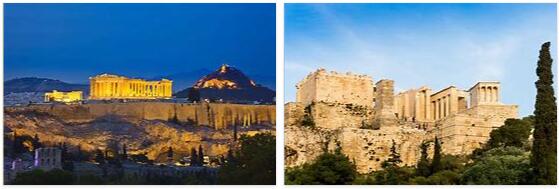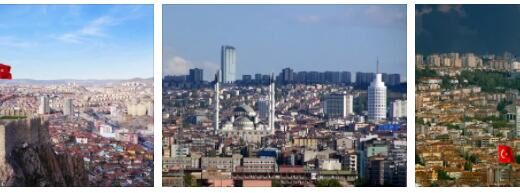Athens, Greece
Attica is a native Greek land. Located in the basin of Attica, formed by the mountains off the coast of the Saronic Gulf, modern Athens is the capital and largest city of Greece. Their favorable geographical position and mild climate were the main reasons why this place was chosen for settlement. The coasts of Attica have been famous for their beauty since ancient times. A geographical triangle, far out into the sea, ends Cape Sounion, surmounted by a beautiful crown, the temple of Poseidon. It is in this place that two seas meet – the Ionian and the Aegean.
The origins and development of Greece are connected with Athens, one of the most ancient capitals of the Western World. The city was named after the goddess Athena around the end of the 16th and beginning of the 15th century BC. The history of Athens has about 4000 years. According to the ancient Egyptian tradition, which was recorded by Solon, already from the 10th millennium on the land of Attica lived “beautiful and noble people”
But not only the charm of the past attracts foreign travelers to the Greek capital. Modern Athens is a lively, extremely charming city, one of the safest, as well as one of the most beautiful, hospitable and fascinating.
What should you see in Athens?
Acropolis – a rocky hill 156 meters above sea level is located in the center of the Attica basin. Steep on three sides, it has an ascent to the top only from the western side. For thousands of years, the Acropolis has been a symbol of Athens, a sacred rock, a link between the majestic civilization of ancient Greece and modernity. The Acropolis Museum houses priceless treasures.
The Ancient Agora (Temple of Hephaestus) is located at the foot of the Acropolis (Tision metro station). The word “agora” in Greek means “bazaar” and today every week a Sunday market is held here.
National Archaeological Museum – has one of the largest and most significant collections of ancient Greek art.
Plaka is the oldest and most colorful area of Athens. Pleasant colors and architecture of neoclassical houses, small gardens – it seems that even the air here is different: lighter, clearer, filled with aromas, like a gift from the gods. The central square of Plaka is occupied by cafes, restaurants, bars, nightclubs, there are many souvenir shops.
In the vicinity of Plaka, you can get acquainted with the majestic ruins of the Temple of Olympian Zeus, see the Arch of Hadrian. A real oasis in the city center is the National Garden, where you can enjoy the view of flowers and plants from all over the world. Adjacent to the garden is Zeppion Park. In this small park there is a beautiful building of the Zeppion Palace – the center of exhibitions and congresses. Opposite the National Garden is the white marble Panathenaikon stadium. This is an exact reconstruction of the ancient stadium (330 BC), built in 1869-1870. for the first Olympic Games, which in 1896 revived the ancient Hellenic tradition.
Syntagma Square
The main landmark in the city center is Omonia Square and Syntagma Square. On Syntagma Square is the building of the Greek Parliament, and in front of it is the monument to the Unknown Soldier, where a very beautiful ceremony of changing the guard takes place every hour.
Your acquaintance with Athens will not be complete if you do not drink a cup of coffee on Kolonaki Square – the most secular place in the city. The Kolonaki area has some of the best shopping in town.
Don’t miss the opportunity to admire the panoramic sea view of the city and the stunning view of the Acropolis from the top of Mount Lycabettus (278 m above sea level). To get to the top of which you can use the funicular (the car leaves every 10 minutes).
Cape Sounion
In just an hour, a car will take you from the center of Athens to the cape, with its majestic temple of Poseidon. The road will give you great pleasure, because it runs along the Saronic Gulf and you have the opportunity to admire hundreds of yachts at the piers, have lunch or dinner in one of the seaside restaurants.
The main port of Athens and the largest port in Greece is Piraeus. As a result of the rapid development, Piraeus merged with Athens into a single whole, and at present the border between the two cities is practically indistinguishable and has only an administrative significance. From Omonia Square, you can take the metro to the Kondili promenade in about 20 minutes. Life in Piraeus is centered around three estuaries – the Central Liman, from where ships depart to the islands of the Aegean Sea and to the island of Crete; elegant yachts.



